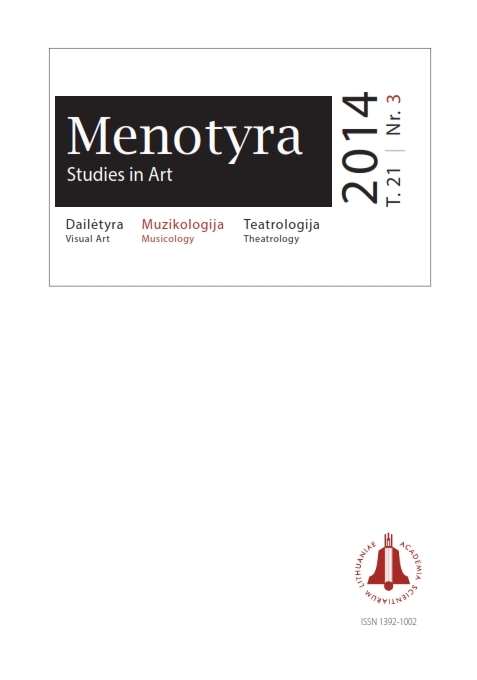Baltiškoji Savastis: archetipiniai rezistencinės kovos bruožai nežinomoje sovietmečio vargonų muzikoje (T. Makačino „Malda už Lietuvą“, P. Vasko „Musica
serva“)
Baltic Self: archetypical features of resistance fight in the unknown organ music of the Soviet times (T. Makačinas “Prayer for Lithuania”, P. Vasks “Musica serva”)
Author(s): Jūratė LandsbergyteSubject(s): Fine Arts / Performing Arts, Music
Published by: Lietuvos mokslų akademijos leidykla
Keywords: archetype; Self; dramaturgy; organ; resistance; darkness; bells; fanfares; prayer; lament; light
Summary/Abstract: It is worth noticing in the Baltic organ music the presence of intensive semantic gestures which were ignored earlier but had a great influence on the nations’ consciousness. They tell the existence of the archetypes, according to C. G. Jung, images of collective sub consciousness and the activity in art areas. It is the meaning of experiences, being pushed into subconsciousness and smothered, lying in the layers of memory, independent from the conditions, seeing its activeness, impulses and rush into light. Such is the archetype of all archetypes, the whole with their dramaturgy and structure, the so-called Self (Selbst), manifesting as a way of sacredness in the Baltic organ music. Here the author speaks about two works created in the Soviet times but not publically performed, not outspread, unknown, still existing in manuscripts. It is the 4th sonata by the Lithuanian composer Teisutis Makačinas (*1938) called “Prayer for Lithuania” (1980), based on the repetitive development of the Lithuanian laments, plain and labor songs, writing the harmony of the triads of church chorale into the light. also, the organ work by the Latvian famous composer Peteris Vasks (*1946) called “Musica serva” (1988) is as if devoted to the restoration of the function of church music, but indeed it is concert modern with free semantics of combative gestures of sonoristics and aleatorics.Both works tell about the Baltic resistance of the archetype Self - struggle with the darkness for survival (call from the depths, laments, prayers, fight fanfares, musical signals of bell din, defecation, rise to brightening , vibrant pulsation of space), the paradigm of transcendental verification. This effused to the Baltic style of sacral minimalism, bell echoes, prayer meditation (a. Pärt, V. Bartulis, I. Zemzaris). But the aforementioned two works open the darkness of resistance struggle, the context of pain and suffering which was not recognized for a long time, unseen, but indeed, radically emphasize especially important parameters of musical signing in the Baltic music.
Journal: Menotyra
- Issue Year: 21/2014
- Issue No: 3
- Page Range: 243-256
- Page Count: 14
- Language: Lithuanian

